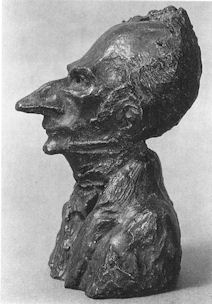
Daumier's piece bellow demonstrates a beautiful interpretation of satire in the rendition of Mr. Jacot-Lefaive's bust sculpture. The comedic value of this piece demonstrates how even during the 19th century, political joking was just as natural. Furthermore, it relates to the current era in the illustrative works of computer animation, resembling exactly, the overdoing of facial proportions and physical stature. I have great admiration for this piece and it shows how all the work that has entertained my childhood has been influence by creations hundreds of years prior.

The influence Daumier's work has had on the current era of cartoons is indescribable, from the humanistic representation of a mouse- Walt Disney's Mickey Mouse, to Pixar's Brave, demonstrates the advanced characteristics of illustrations. His exaggeration of features also reflects that of more elaborate works like The Incredibles or Dreamwork's Megamind. They often add to character traits and super powers.
Sources:
Daumier, Honore. "Mr. Jacot-Lefaive." Sculpture. 1833. Web. 14 Dec. 2013.
"Megamind Photograph." Dreamworks. Web. 14 Dec. 2013.






